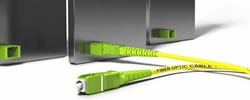Trends in Set-Top Box Deployments
OTT opening up IPTV opportunities for traditional cable and telecom providers
As cable operators and telco providers are finding, traditional set-top box offerings are less interesting to customers than was previously the case, due to the rise of multiple streaming services. This has led to a decline in revenue related to video content delivery. As such, operators are looking for a new revenue sources that leverage Over-The-Top (OTT) services that can still generate revenue, while offering customers a way to stream such services as Netflix, Hulu, and the like.

Almost every new television today is a Smart TV, offering customers an easy way to stream their favorite services. Tablets, phones, and computers also offer an easy interface to streaming services. So, without additional benefits found in renting a streaming box, the only incentive to use one of these STBs is if additional channels are offered, as is the case with bundles like those offered by Comcast, Spectrum and Optimum. In these cases, local channels and other traditional “cable” channels are bundled in a package that includes the streaming box.

Many of these new set-top boxes are Android-based, Google-Certified and IPTV-based. These devices utilize either an Ethernet or Wi-Fi connection to access the Internet. This access is critical, as there is no Internet or proprietary video connection as in past RF (coaxial) or fiber-based boxes. These newer IPTV boxes use an internet connection to access video streaming services, and if provided by an operator, can access specific programming provided at a premium. These services can compete with “live TV” options like Hulu Live TV and YouTube TV. This added-value pairs with streaming services like Disney+, Paramount+ and others.
For providers offering these boxes, they need to be able to recycle them as subscribers move or disconnect their services. These newer, Android or TiVo-based streaming boxes offer a more compact footprint than legacy set-tops. Usually equipped with only HDMI video and audio, optical audio, Ethernet and 1-2 USB ports. As Google-certified devices, there are certain commonalities in navigation and authentication. These requirements can present challenges when testing these devices. They also include bluetooth and often IR remote controls that can impact the ability to test the devices. All of these functions need to be tested, along with the ability to download and execute apps available.
Specialized vendors like Promptlink have expertise and experience testing these types of devices, and offer a preconfigured solution designed for high-volume logistics testing of these IPTV devices, With Google account authentication, video and audio capture, remote pairing and testing and more, these solutions offer operators a platform for testing the full functionality of devices.
Once tested and recertified as good (or bad) devices can then be reissued or sent off for repair. If you need such solutions, Promptlink has multiple options of all sizes available.
Contact us today to consult with our professionals on a properly scaled solution to meet your needs.
DOCSIS 4.0: Ushering in the Next Generation of Cable Internet
What is Wi-Fi 7? The New, Faster Standard
Trends in Set-Top Box Deployments
How Network NoiseHawkAI Is Changing Network Monitoring
Deciding if Automated Testing is Right for Your Application
Using AI Technology to Automate Pinpointing Upstream Noise
Pandemic-Related Component Shortages and the Impact Across the Broadband Industry
What is Wi-Fi 6 and Why is It Important?
What is CPE and Why Does It Matter?
Rural Broadband and FCC Expansion Explained
The Challenges of Monitoring Upstream Noise in a Remote PHY Environment
Why Promptlink Automated STB Solution is Right for You
What is broadband network noise and why is it difficult to find?
How Do You Measure Network Health and Performance









